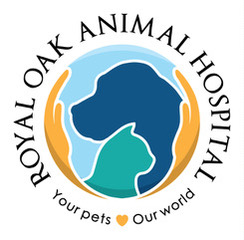Library
-
Deafness does not affect a cat's learning abilities, but it does impact what kinds of cues they can learn. The keys to success are choosing a set of consistent signs and signals and learning what the cat finds rewarding. Deaf cats need special supervision such as leashing or a catio if allowed outdoors, and may startle more easily than cats that can hear, but otherwise can be trained with all the same methods used for a cat with normal hearing.
-
This handout summarizes the differences between brand name and generic medications. Included is an explanation as to why both forms of medications exist, as well as things to watch out for when opting to use or request a generic medication. Cost savings for generic medications are also discussed.
-
Secondhand smoke is not just detrimental to people but also our pets. Pets may be even more sensitive, due to their enhanced smell and different anatomy and physiology. Cancer risks are significantly higher in pets exposed to secondhand smoke.
-
Dental X-rays in cats are similar to those taken in humans. In many cases, intraoral (within the mouth) dental X-rays are necessary to identify and treat dental problems in your cat. Nearly two-thirds of each tooth is located under the gum line. Your cat will need to be anesthetized to accurately place the X-ray sensor and perform a thorough oral assessment, treatment, and prevention procedures.
-
Complete and accurate medical records are like a medical diary for your pet. The ability to review your pet’s medical history before the first appointment will allow your new veterinarian to provide exceptional care that is tailored and timely. You can request that your previous veterinary clinic send your pet's records to your new veterinarian.
-
A lustrous coat is a signal of vitality and health. The food your pet eats can significantly impact the condition of their skin and coat. A balanced diet plays an essential part in supporting your pet's skin and coat, and should include essential fatty acids, protein, vitamins and minerals. If you are concerned about the condition of your dog or cat's skin or coat, consult your veterinarian in case there is an underlying nutritional or medical condition.
-
Electronic pet doors with microchip sensors can make life easier for pet owners and their pets by giving the pet freedom to enter and exit the home without disturbing the owner. However, there are things to consider before installing one. The location, size, and type of door should be carefully considered in relation to the pet and the outside environment. Following a few guidelines will make it simpler to choose and install the best door.
-
As veterinarians become more conscious of the details and nuances of how cats experience pain, they search for more methods with which to battle both acute and chronic pain in these patients. Therapeutic massage is one example of a physical medicine technique that has found a place in the feline pain management toolbox.
-
Therapeutic ultrasound a treatment method that applies thermal, mechanical, and chemical effects to tissues to improve healing. It can be used to increase the stretch in fibrous tissues (such as tendons), which can help increase range of motion around a joint. Therapeutic ultrasound can also be used to soften and break down scar tissue that is interfering with movement. By deep heating the tissues, therapeutic ultrasound increases blood flow to the inflamed areas, which can help reduce inflammation and swelling. Therapeutic ultrasound can also decrease pain and muscle spasms, as well as speed up wound healing.
-
Ringworm in Cats
Tiña es el nombre común que se le dá a una infección fúngica en las capas más superficiales de la piel, pelo y uñas. En la gente infectada las lesiones presentan una lesión redonda, roja, delimitada por unos bordes elevados a causa de la inflamación.


